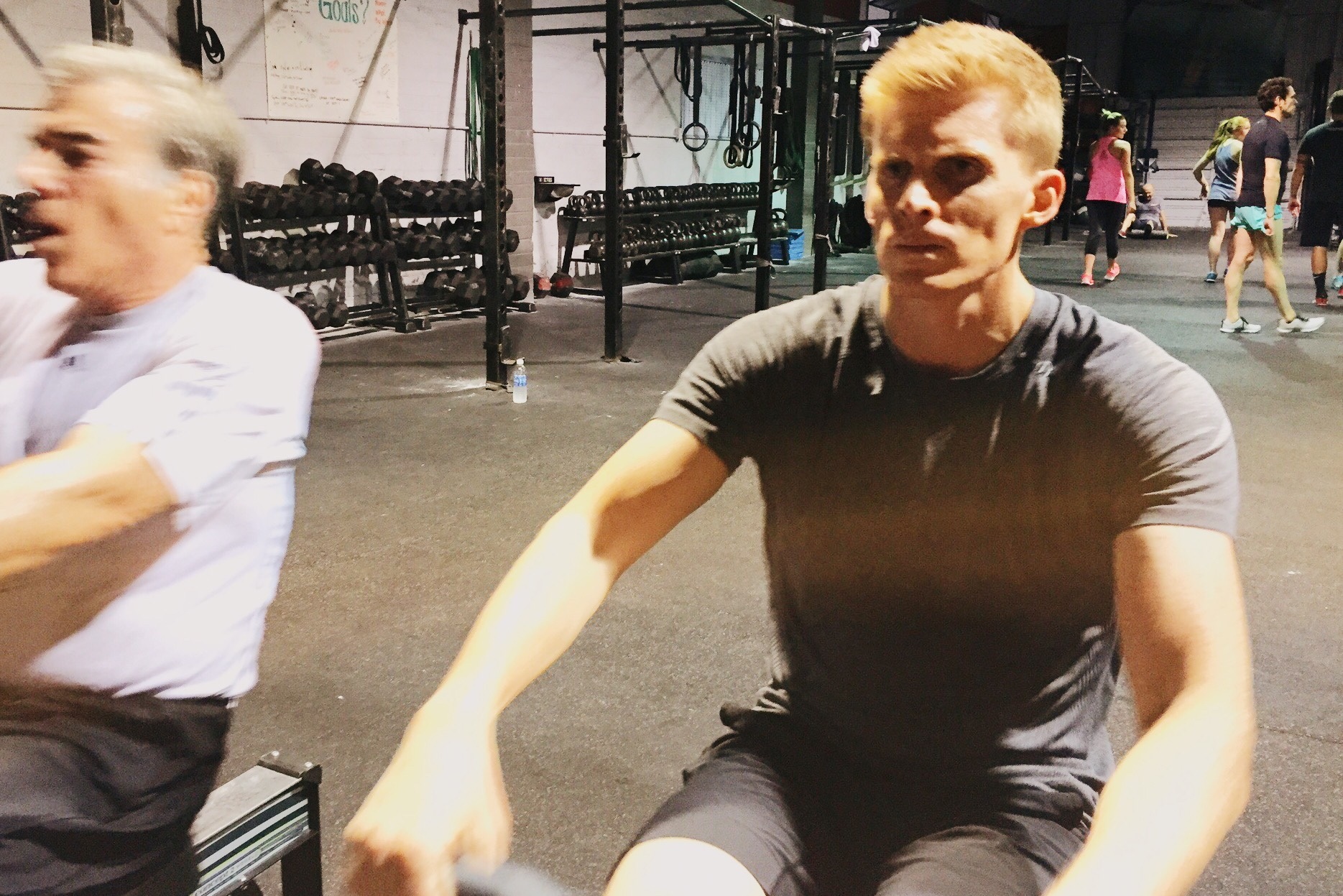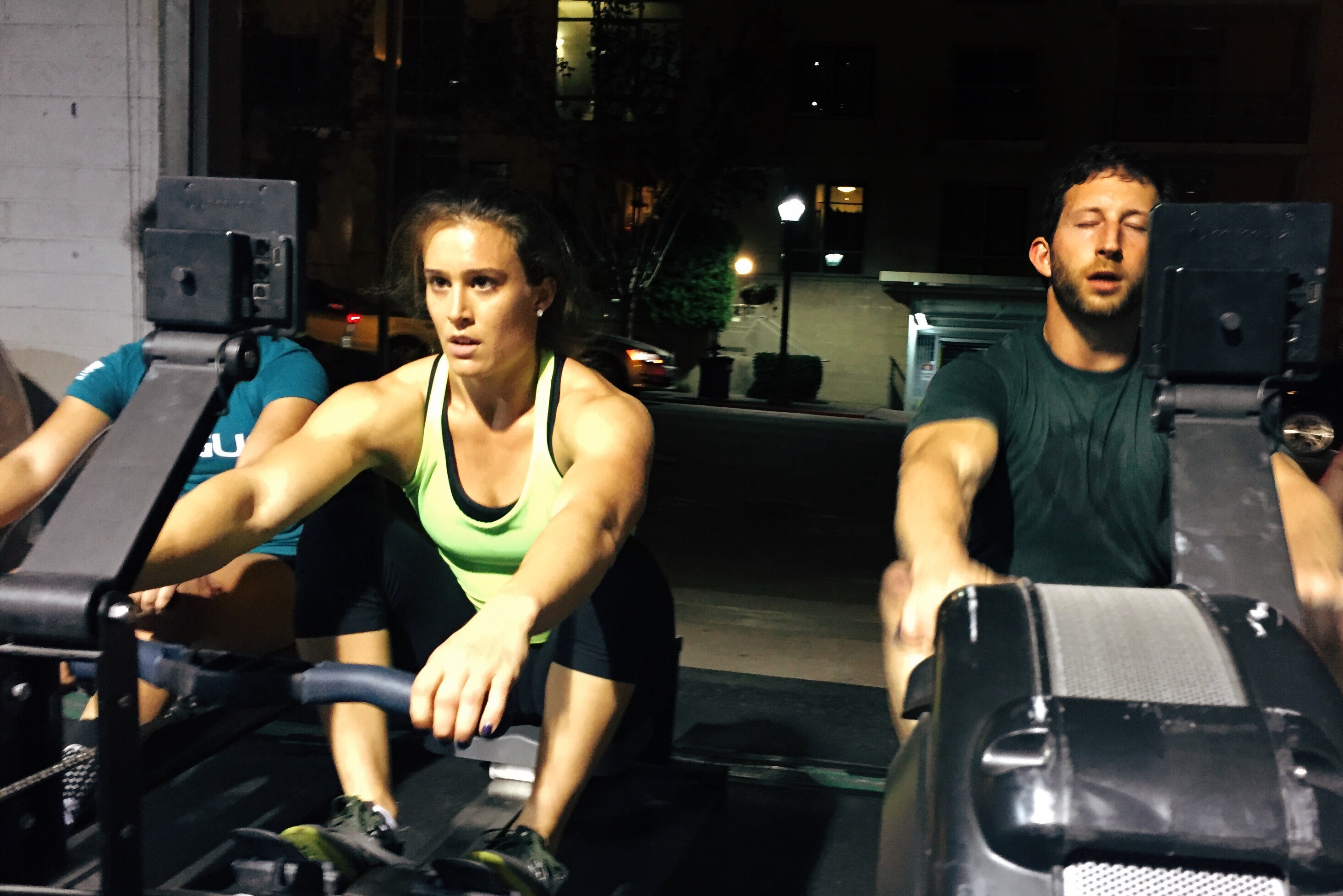
How Rowing Can Help You Recover Faster
Rowing is a power endurance sport and it is directly related to your aerobic capacity. Endurance training is a type of exercise that utilizes aerobic energy as the major energy source; this can be any rowing distance from a 1k to a marathon row or even longer.
Understanding Energy Usage
Aerobic energy is the energy that your body produces when the oxygen supply matches the energy requirements. This form of energy is produced utilizing glycogen and fat. During prolonged aerobic training (typically greater than 45 minutes) the body learns to more efficiently utilize fat for energy. It is, therefore easy to understand the benefits of this in regards to endurance events. The more efficiently your body utilizes fat, the better you will perform because it will be always available during longer training versus replenishing the glycogen storage. That is really challenging in the endurance world.
A greater aerobic capacity allows you to produce more aerobic energy which enhances performance in ANY endurance event.
Reduce Risk of Injury
During pure aerobic training, the lower intensity level of the training results in less stress to the body’s structure (i.e. bones and joints) as well as the immune system so it will reduce training-related injuries. Athletes who are committed to aerobic training suffer far fewer injuries than those who stress their body more regularly. If you are an endurance athlete that experiences any of these problems, you should seriously consider examining your training schedule and doing more aerobic- and less anaerobic training.
Manage Fatigue
Utilizing aerobic training and not over-stressing your body from frequent anaerobic workouts; your recovery times will be shorter. Shorter recovery times will not only allow you to train better and longer, but it will also significantly reduce the fatigue that athletes often experience during training cycles. Most frequently this fatigue is related to over-training, inadequate recovery, and insufficient sleep. By decreasing the stress on the body, aerobic training reduces fatigue, allows you to obtain your resting heart rate quicker, and downregulate hormones, resulting in improved recovery.
A Good Cool Down
Often times you will see athletes in a Crossfit competition hop on the rower or an air dyne right after a grueling workout to cool down. A good cool down will typically last between five to ten minutes, depending upon the level of activity. The goal is to lower the heart rate while keeping the oxygenated blood pumping through your body.
“Keeping moving enables the muscles to contract and assists the heart in pumping. It allows the vessels to contract slowly and expire the waste products as carbon dioxide.”
– Katherine Derbyshire
If you stand still, then the heart has to all the work by itself. If you continue to move, then the action of the muscles will assist pumping fluids around the body. Keeping moving enables the muscles to contract and assists the heart in pumping. It allows the vessels to contract slowly and expire the waste products as carbon dioxide.
Deal with Soreness
We’ve all been there. Too much weight, too many reps, too many days off between workouts, and we feel it the next day. Or for the next several days.
Aside from the discomfort, delayed-onset muscle soreness (DOMS) undermines athletic performance. Athletes, coaches, and trainers all have an interest in understanding what causes it and how to minimize its effects. While the cause is straightforward – muscle damage due to unaccustomed exercise, particularly large quantities of eccentric muscle actions – studies of recovery strategies have been inconclusive. Ice, massage, dietary interventions and other forms of passive recovery all seem to work to some degree, at least for some people.
Active recovery strategies, such as aerobic exercise, have not been studied as extensively, though their theoretical foundation seems plausible. Aerobic activity increases blood flow, removing the metabolic waste products responsible for DOMS and delivering more nutrients to the affected tissues. Moreover, aerobic exercise should be able to increase blood flow without causing further muscle damage.
Why Rowing
It was once believed that the 2000-meter race involved 70 percent aerobic activity and 30 percent anaerobic activity. Today we know it to be 80 percent or more aerobic and 20 percent or less anaerobic. Most programs reflect these percentages over the year’s training, which means that building the aerobic base has become increasingly important.
Rowing is happening on a flat surface so all the variables that occur during running or biking due to uphill or downhill can be eliminated. Rowing monitors give you feedback every moment.
Adaptation
Most of the time metabolic conditioning can be overlooked. People don’t want to row a 5k or 10k, people want to go and lift heavy weights. If you begin to neglect certain parts of your conditioning, you’re going to start to struggle. For instance, CrossFit is an endurance sport. How often in a competition will you need to find a 1RM? It doesn’t need to be complicated; you need to be working across broad time domains and energy systems. Performing a large amount of steady-state training to build the aerobic base is common practice today.
Rowing is a great comparison for aerobic capacity. In endurance sports you can’t always see the finish line, you just got to get out there and start working. And while you work on your endurance you also train the mental aspect of your sport.
Sources:
Developing an aerobic base for rowing – Volker Nolte
How To Tap Into Fat For Fuel – Torbjørn Sindballe
Metabolic Conditioning – the CrossFit pyramid, from the bottom, up. – Jordan Fulcher
Can I Train Strength and Endurance in the Same Session? – Katherine Derbyshire
DOMS: Why You’re So Sore and How to Make It Better. – Nicole Crawford
No products in the cart.


